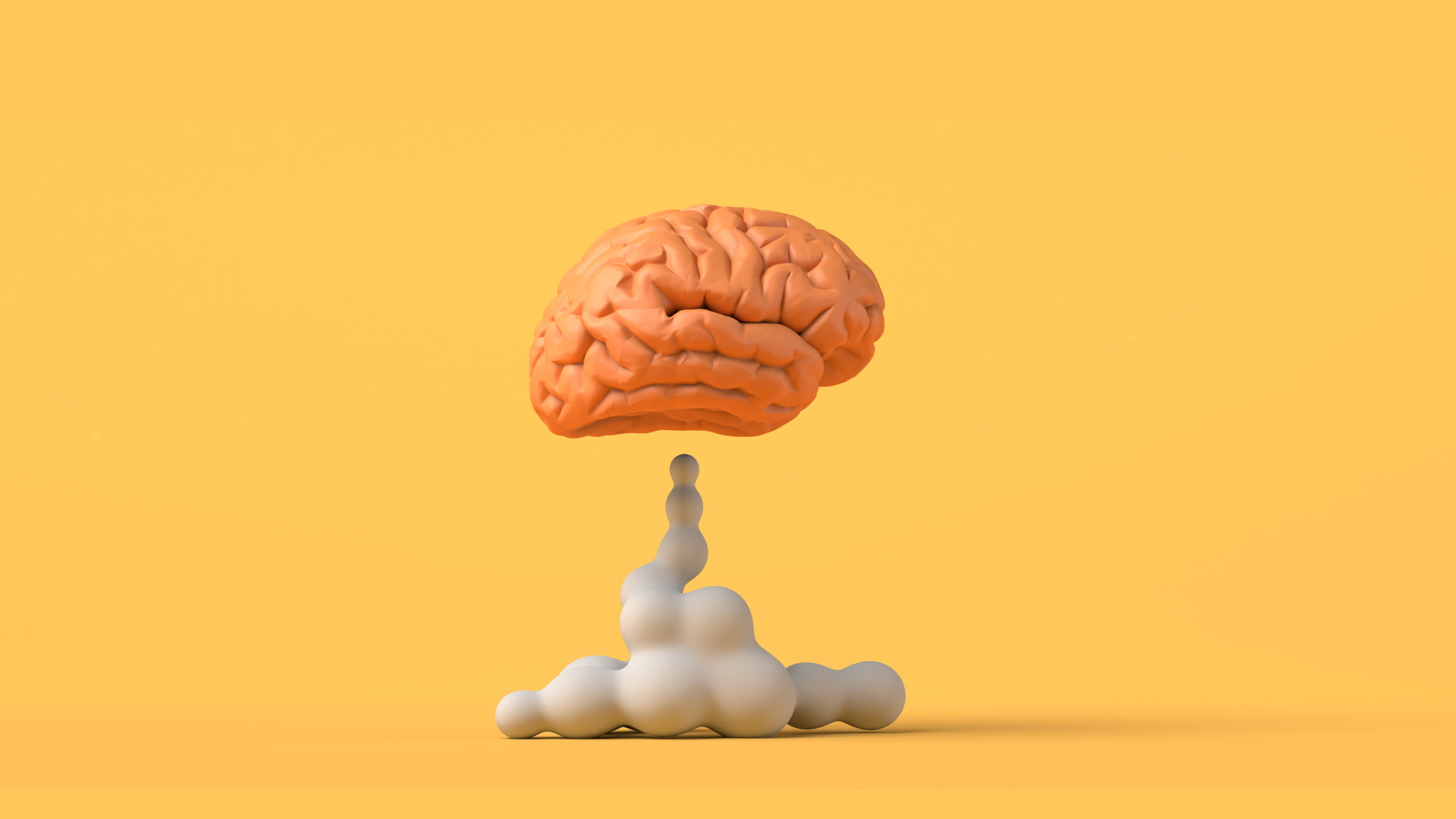
With the start of the new year, we’re setting new goals and thinking of the next steps to take for a brighter future.
As we set new resolutions in place, a lot of what we do to be better is to pick up a new skill or boost our knowledge.
Learning something takes time.
But to ensure that we are learning the best we can, we need to do more than just passively pick up things. By understanding our brain a bit better, we can hack the learning process and hopefully let the things we study, stick.
Our brain when we learn
But before we go into learning, it’s important to first understand how our brain learns in the first place.
This is where Ebbinghaus’ Learning Curve comes in.
Ebbinghaus, a famous German psychologist, found that when it comes to learning new information, our hopes to retain it level out if we continue to revise the material after several days out. In fact, within 20 minutes of inputting information into our brain, the chances of us remembering fade.
This essentially means two things when it comes to learning something new:
- Don’t expect to cram in information and retain it thereafter
- Space out your learning over multiple days, coming back to it in small chunks
Our brains can change
Unlike what some may believe, learning isn’t only for the young.
While our ability to absorb information may be strongest during adolescence, learning can happen at any age.
This is because our brains are malleable and subject to change — a concept otherwise known as neuroplasticity This refers to the idea that with enough effort and repetition, we can continue to form new neural connections, and in turn, actually change the structure of our brain.
Plenty of research indicates that our brain changes from the experiences we go through. The brains of those who deal with chronic stress and anxiety look different from those who are less stressed out.
This goes much the same way with positive experiences. The more we push our brains to learn new things, the more likely new connections strengthen. And like any muscle, the more regularly we make this a habit, the faster the neural signals are transmitted. In other words, like a cycle, the more effort we put into learning something new, the easier it becomes, which then adds greater fuel to the pursuit of learning.
Picture neuroplasticity like a walk over a fresh field of grass. The more you walk along the grass, the clearer a path will form. Yet, if you one day choose not to walk on the field at all, new vegetation will grow and cover up the path made. It’s no different with the connections made in your brain. The more frequently you use this part of the brain, the faster and easier it will be to learn in general.
Adopting a growth mindset
But before you go about doing so, nothing will work out so smoothly if you believe otherwise.
Long-term effective learning can come only if we truly believe in the journey.
For those of believe that we’re unable to learn this or that, or feel as if we’re limited by our age, you may have what’s known as the fixed mindset. But for efficient, effective learning to take place — long-term — you need what is known as the growth mindset.
First introduced by Stanford psychologist, Carol Dweck in her book Mindset: The New Psychology of Success, she notes that people tend to show qualities of having either a fixed or growth mindset.
The latter refers to someone who sees new skills, abilities, and knowledge to be something we can learn and improve upon. The former is more ‘fixed’ on the idea that our abilities and intelligence are relatively inherent and cannot change all that much after a given period.
The truth of the matter is, it isn’t that we have either or. Dweck explains that our mindsets exist on a spectrum, possessing traits that exist somewhere between growth and fixed.
Someone that possesses more of a growth mindset looks at learning in the following ways:
- Practice and perseverance —To learn something require constant practice and persistence. We can’t just wish for something to happen and expect results. A growth mindset should not be confused with being positive, as growth can only come from effort.
- Failures are a part of growth — While effort plays a big part to having a growth mindset, it’s also important to manage expectations. If we think that putting in the work will help us grow regardless, this is wrong. This is what is called ‘false growth mindset.’ Knowing that failures and setbacks are part of the learning process is important to note for a real growth mindset.
- Know your limits — Sometimes we can get caught up in our motivations and efforts, thinking we can be and do anything we wish. A growth mindset isn’t about believing we can do it all, because realistically, we can’t. Know your limits, and what you aren’t able to do, and approach learning with a realistic lens.
- Pay attention to speech — We aren’t only what we do, but what we say as well. The field of psycholinguistics touches on the importance of speech, and how it affects our general psychology. If we hope to grow, we must be conscious of how we speak about ourselves. Simple statements like “I’m not good at learning new languages” are already setting up mental barriers that prevent us from genuinely growing.
- Self-reflection — You can’t expect to grow unless you reflect and review your actions. People with a growth mindset know that real growth requires constant self-reflection, approach refinement, and refreshment.
- More than just mindset — Finally, while it is called a mindset, in the end, a true growth mindset involves a lot more than that. Adopting a mindset requires motivation to improve, a long-term commitment of effort, patience, and perpetual trial/error.
In the end, the fundamental difference between growth vs fixed mindset is how you view failure. It is not about denying the actuality of failure, but knowing that it exists, and it comes with the process.
Tips on how to learn better
So with knowing about the interval of time needed to retain information, being aware that our brain can form new connections, and understanding that a change in mindset is important — how can we really go about learning better? What are the steps?
While there is no set magic formula, the following points are psychological points to remember when learning something new, hopefully helping you learn better:
- Repetition — helps us shift the learned material from our short-term memory to long-term memory. This is the basis behind Spaced Learning, a method of increasing the retention of learned material. Spacing effect
- Spacing — Using what we know about Ebbinghaus’ Learning Curve, we know that over X amount of days, our ability to retain the information gets betters and evens out, compared to the first 20 minutes. Therefore, playing on the spacing effect, we should use what many language learners call ‘spaced repetition learning. This helps to activate the neurons in our brain repeatedly and retrieve the information more easily. Take frequent breaks from the material and get plenty of sleep to ensure your brain is re-organizing all of the information.
- Reactivation — Much like the muscles of your body, you need to keep reactivating to strengthen. So just learning something to the point of recall is not enough. Make sure to find ways to review the material in varied contexts, as it helps with reactivating and re-engage the connections differently.
- Stress — When we’re trying to learn something new, it can often feel frustrating and overwhelming as we feel bouts of futility, stupidity, and wonder about whether we’re really improving all that much. Effective learning comes from a stressless environment. Brain science tells us that stress releases cortisol, which too much of can damage hippocampus cells responsible for memory. Furthermore, when we stress a lot, there is a drop in attention and perception, which will only hold back the learning process.
- Sleep — As mentioned above, learning is not about stressfully cramming stuff into our brain with the hopes of remembering. It’s about segmenting our study sessions, taking frequent breaks, and getting enough rest each spaced-out session. A lack of sleep impairs our ability to pay attention and decreases working memory function.
The thing about Active Learning
Beyond all the tips mentioned above, one last pointer is to make sure we’re actively learning instead of passively. A lot of us go about studying or learning something without engaging ourselves fully. Active learning is an approach that involves really immersing ourselves into the whole experience of learning.
Some strategies on how to actively learn is:
- Brainstorm — Speak with other friends or people that are learning the same thing as you, and brainstorm together. Getting new perspectives on a subject can help broaden your understanding of it.
- Concept mapping — Whether its using tools like Figma, Miro, or Mindnode, try to map out ideas and concepts in a mind map. Link related concepts together and see how they all form relationships to the bigger picture. Much like the neural connections in your brain, this helps to visualize and conceptualize the entirety of a subject.
- Create prompts — When you’re learning something, it can be quite easy to adapt to one approach. This is why its important to mix it up whenever you feel things are becoming too easy or predictable. Create prompts where you may apply the new knowledge or skill in real-world situations and varying scenarios.
Active Learning means students engage with the material, participate in the class, and collaborate with each other. They can help demonstrate a process, analyze an argument, or apply a concept to a real-world situation.
– Stanford University
In the end, we’ve never been taught how to learn, which is why many of us may not be good at it. But learning, like anything else in life, is a skill we can improve upon. And the better we become at doing it, the easier it will be to pick up other new skills, habits, and information.










